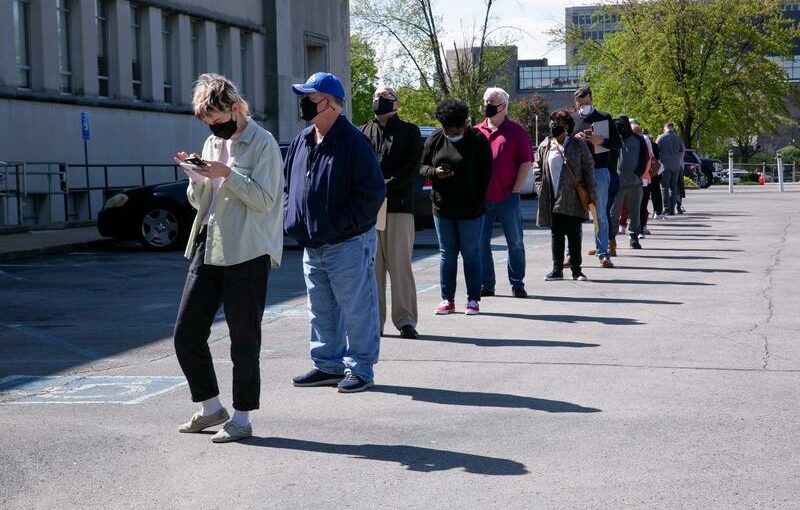WASHINGTON (Reuters) – The number of Americans filing new claims for unemployment benefits dropped further below 500,000 last week, suggesting job growth picked up this month, though companies still are desperate for workers.
Initial claims for state unemployment benefits totaled a seasonally adjusted 444,000 for the week ended May 15, compared to 478,000 in the prior week, the Labor Department said on Thursday. That was the lowest since mid-March 2020.
Economists polled by Reuters had forecast 450,000 applications for the latest week. Claims remain well above the 200,000 to 250,000 range that is viewed as consistent with healthy labor market conditions. They have dropped from a record 6.149 million in early April 2020.
Applications are likely to decrease further in the weeks ahead after Republican governors in at least 21 states announced they would withdraw next month from unemployment programs funded by the federal government, including a weekly $300 subsidy, which businesses say are encouraging the jobless to stay at home instead of seeking work.
“This should result in a decline in claims throughout the coming weeks with a possible increase in labor force participation by the June payrolls report, as there are roughly 16 million people still receiving some type of benefit as of the end of April,” said Veronica Clark, an economist at Citigroup in New York.
From manufacturing to restaurants and bars, employers are scrambling to find workers, even as nearly 10 million Americans are officially unemployed. The enhanced unemployment benefits pay more than most minimum wage jobs. The minimum wage is as low as $7.25 per hour to as high as $15.
With more than a third of the population vaccinated, restrictions on services industry businesses are being lifted, allowing for broader economic re-engagement. The economy is also being underpinned by nearly $6 trillion in pandemic relief provided by the government over the past year.
Lack of child care facilities, with most schools offering partial in-person learning, as well as lingering fears of COVID-19 and pandemic-related retirements are also believed to be contributing to the worker shortage, which curbed hiring in April. The government-funded benefits expire in early September and school districts are expected to resume in-person classes in the fall, which economists hope will boost the labor pool.
Minutes of the Federal Reserve’s April 27-28 policy meeting published on Wednesday acknowledged reports of businesses
“having trouble hiring workers,” noting that some of the factors behind the worker scarcity “were seen as likely to remain significant while pandemic-related risks persisted.”
Last week’s claims data included the period during which the government surveyed business establishments for the nonfarm payrolls component of May’s employment report. The economy created 266,000 jobs in April after adding 770,000 in March.
Economists will await data next week on the number of people continuing to receive benefits after an initial week of aid to get a better picture of how hiring fared in May.
“The overall trend in labor market conditions remains positive, even though it is unclear how that will translate quantitatively into next month’s employment data,” said Lou Crandall, chief economist at Wrightson ICAP in Jersey City.
Source: Read Full Article
